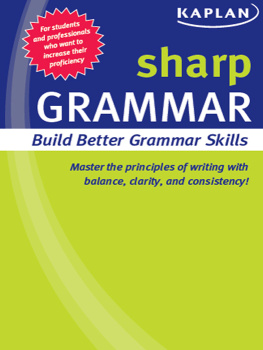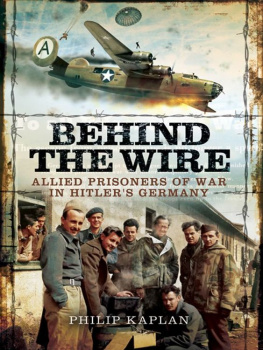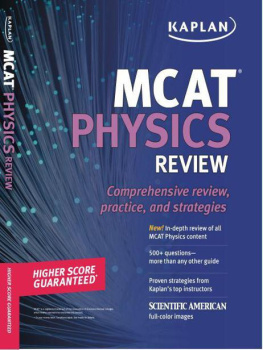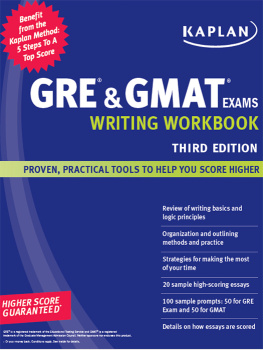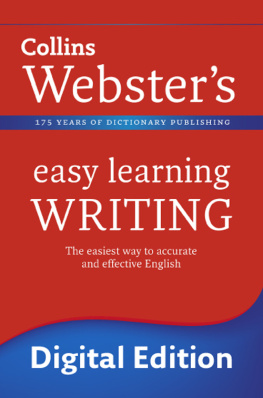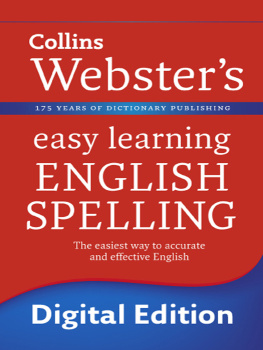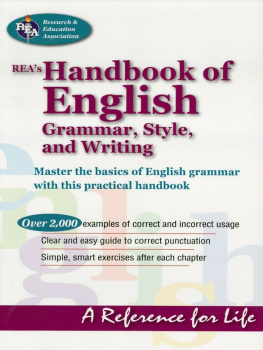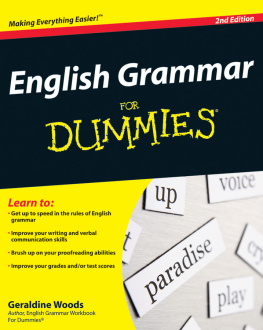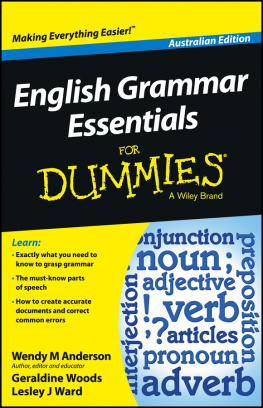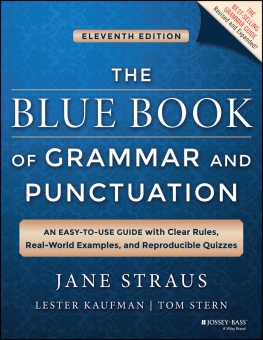editing made easy
For
Haya Kaplan
Nachum Kaplan
and
Suzie Cox
Upper Access books may be purchased in quantity at substantial discounts by book clubs, writers groups, schools, businesses, and other organizations. If you have use for 10 or more copies of this book, or any other Upper Access title, please contact us for details. We can be reached at 802-482-2988 or info@upperaccess.com.
Bruce Kaplan
editing made easy
simple rules for effective writing

Upper Access, Inc., Book Publishers
87 Upper Access Road
Hinesburg, VT 05461
Copyright July, 2012 by Bruce Kaplan
All rights reserved. For permission to quote material from this book please contact the publisher.
Cover design and interior layout by Kitty Werner, RSBPress, Waitsfield, Vermont
Cover photo of computer iStockphoto.com/Kaczka
This edition of Editing Made Easy is created for distribution in the United States of America. Some of its contents have been published in different form by Bruce Kaplan, 1999 and 2010, and by Penguin Books Australia Ltd., 2003.
ISBN 978-0-942679-36-6 (trade paper)
ISBN 978-0-942679-38-0 (electronic)
Library of Congress Cataloging-in-Publication Data
Kaplan, Bruce, 1942
Editing made easy : simple rules for effective writing / Bruce Kaplan.
p. cm.
Includes index.
ISBN 978-0-942679-36-6 (trade paper : alk. paper)
1. Editing. 2. English language--Rhetoric. I. Title.
PN162.K26 2012
808.027--dc23 2012003412
Printed in the United States of America
12 / 10 9 8 7 6 5 4 3 2 1
about the author
Bruce Kaplan is a newspaper copy editor and editorial trainer with international experience spanning more than 40 years. He has held senior positions with major publications in Australia, Hong Kong and Singapore. He trains editors and writers for newspapers and magazines, and tutors at writers centers and tertiary education institutions. He may be reached at editeasy@hotmail.com.
praise for international editions of this book
Finally, a book about editing and writing concisely that is actually writtenconcisely. Too many books about editing suffer from exactly the sort of problems they profess to solve: dense, difficult copy that is almost impossible to penetrate. But this book lays it out simply and in a matter-of-fact style. As a long-time journalist and editor, it now occupies an important place on my bookshelfright next to me. Anyone else interested in the craft of words will reserve the same place for it.
Gary Linnell, national editor, Fairfax Media, Australia
Part of a writers job is to make it easy for an editor to say yes. Bruce Kaplans Editing Made Easy helps achieve this. It should be on every writers bookshelf next to Elements of Style and Modern English Usage.
Barry Watts, tutor in professional writing and editing, Centre for Adult Education, Melbourne, Australia
Clear, concise and appealing like the writing it promotes. Editing Made Easy is an invaluable guide for the beginner and an essential memory-jog for the experienced journalist.
Colin McKinnon, training editor, The Age, Melbourne, Australia
Editing Made Easy has been one of my bibles in training English language journalists in Malaysia and Bangladesh.
Pieter Wessels, trainer, Commonwealth Journalists Association, United Kingdom
This book gets right to the point. There is no excess here. Reading Bruce Kaplan, one sometimes feels like a light has been turned on or the mists have cleared on many topics.
AuthorsDen, United States of America
I teach magazine journalism to approximately 60 students across the year. Editing Made Easy is clear, concise and accessible for trainees.
Sheridan McCoid, lecturer, Brighton Center for Journalism, United Kingdom
This energetic book is an indispensable tool for writers, journalists, advertising professionals, universities and anyone desiring an easy-to-use editing guide.
Writing Queensland magazine, Queensland Writers Centre, Australia
contents
authors note
This book is a revised and expanded version of my original book, Editing Made Easy, first published in Australia in 1999. I have added chapters, and enlarged some previously published chapters, with more examples and more comprehensive explanations. Significantly, this edition accommodates the rules, conventions, and spellings of American English.
This book is non-technical. My aim is to provide straightforward, practical guidelines for editing, not discuss advanced English grammar. So, although I refer when necessary to such basic terms as noun, verb and pronoun, you will find no loftier technical grammatical terms here, such as present perfect progressive, correlative conjunctions, imperative mood or interrogative adjective.
However, a note of caution is in order. Much of the advice in this book is not to be written in stone. English is a flexible language, and writing a creative calling. There are many acceptable ways for writers to express themselves.
For example, I make the point that two or three short sentences are often better than one long sentence. This is certainly truebut it does not mean there is no room for a well-crafted longer sentence that expresses something important in a certain way or adds to the lyricism, rhythm or power of a text.
Likewise, I warn against using too much passive voice because it can slow the pace. But there are sometimes occasions when the passive voice is needed to maintain a cohesive, flowing narrative.
So be flexible. The purpose of this book is to put the odds on your side; to increase your chances of being published or finding success as a reporter, feature writer, novelist, freelance writer, blogger, Web developer, Web editor, communications consultant, advertising copywriter, speechwriter or public relations consultantin fact anything involving the written word.
Bruce Kaplan, 2012
why learn editing?
the benefits for you
So why learn how to edit? Most importantly, learning to edit will make you a more proficient, more polished writer. It will improve your writing in more ways than you might ever imagine. It will do the same for people whose writing you edit.
This book will give you the practical skills and techniques that professional editors use every day. The advice applies to almost all forms of writing. Exceptions may occur with fiction, scientific and academic writing, and personal expressions such as e-mail and Facebook. But most of the rules apply across the board.
Essentially, this book is about plain English. The advice will help you add punch and clarity to reports, feature articles, press releases, hard news, newsletters, brochures, business communications, short stories, staff bulletins, business proposals, non-fiction books andyeseven novels.
Writing is a demanding, exacting, rewarding and enriching craft. Proficiency in editing is the key to excellence in writing.
lean and clean
what editors do
A skilled writer or editors goal is to get the message across clearly and accurately. Whatever you are writing, the minute it becomes long-winded, garbled, confusing or boring, communication has broken down. Clear, active, interesting English is the key to skilled writing and editing.
Next page

